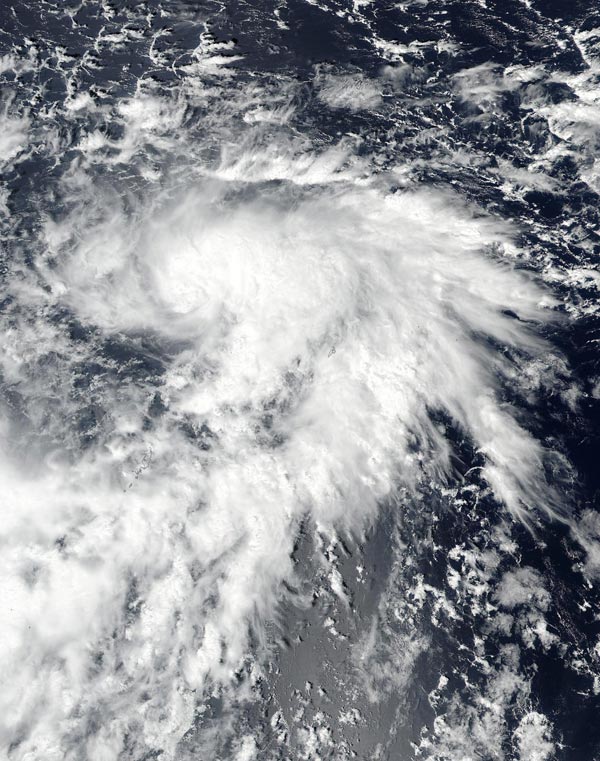NASA finds newly formed tropical storm lan over open waters

On Oct. 16 at 12 a.m. EDT (0400 UTC) the NASA-NOAA's Suomi NPP provided a visible image of the storm. The image showed the bulk of clouds were on the eastern side of the storm. Credit: NOAA/NASA Goddard Rapid Response Team
Tropical Storm Lan developed on Oct. 15 and has been moving to the west-northwest over open ocean.
On Oct. 16 at 12 a.m. EDT (0400 UTC) the VIIRS instrument aboard NASA-NOAA's Suomi NPP satellite provided a visible image of the storm. The image showed the bulk of clouds were on the eastern and southeastern sides of the storm indicating the storm was being affected by vertical wind shear.
At 11 a.m. EDT (1500 UTC) Tropical storm Lan was centered near 10.8 degrees north latitude and 133.1 degrees east longitude, about 214 nautical miles north-northwest of Koror, Palau. It was moving to the west 12 knots (13.8 mph/22.2 kph) and had maximum sustained winds near 35 knots (40 mph/62 kph).
The Joint Typhoon Warning Center noted that Lan is intensifying and is expected to become a typhoon over the open waters of the western Pacific.
Media Contact
All latest news from the category: Earth Sciences
Earth Sciences (also referred to as Geosciences), which deals with basic issues surrounding our planet, plays a vital role in the area of energy and raw materials supply.
Earth Sciences comprises subjects such as geology, geography, geological informatics, paleontology, mineralogy, petrography, crystallography, geophysics, geodesy, glaciology, cartography, photogrammetry, meteorology and seismology, early-warning systems, earthquake research and polar research.
Newest articles

Properties of new materials for microchips
… can now be measured well. Reseachers of Delft University of Technology demonstrated measuring performance properties of ultrathin silicon membranes. Making ever smaller and more powerful chips requires new ultrathin…

Floating solar’s potential
… to support sustainable development by addressing climate, water, and energy goals holistically. A new study published this week in Nature Energy raises the potential for floating solar photovoltaics (FPV)…

Skyrmions move at record speeds
… a step towards the computing of the future. An international research team led by scientists from the CNRS1 has discovered that the magnetic nanobubbles2 known as skyrmions can be…




















